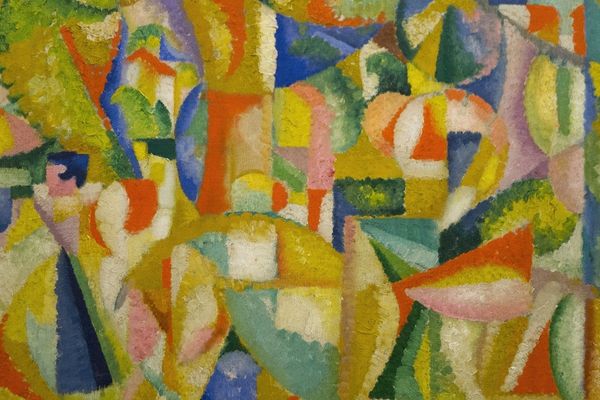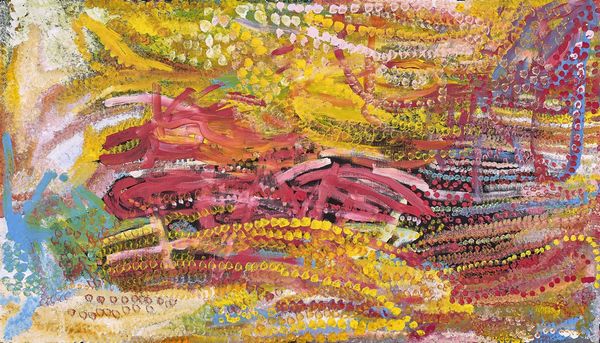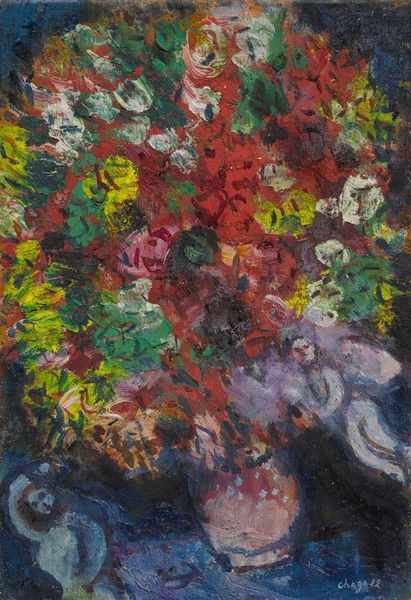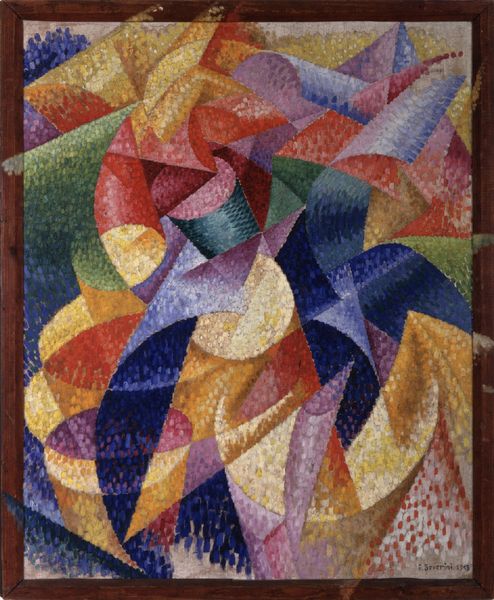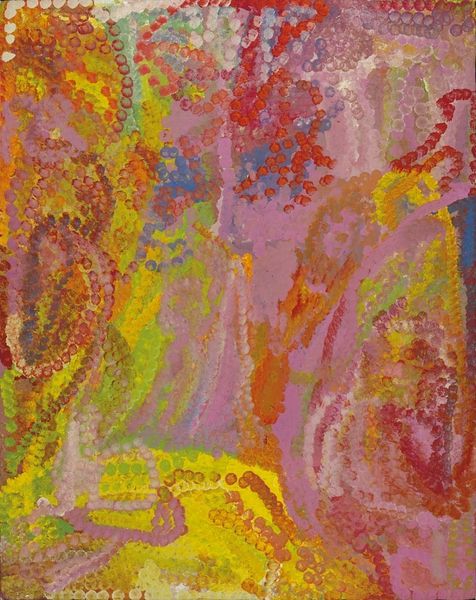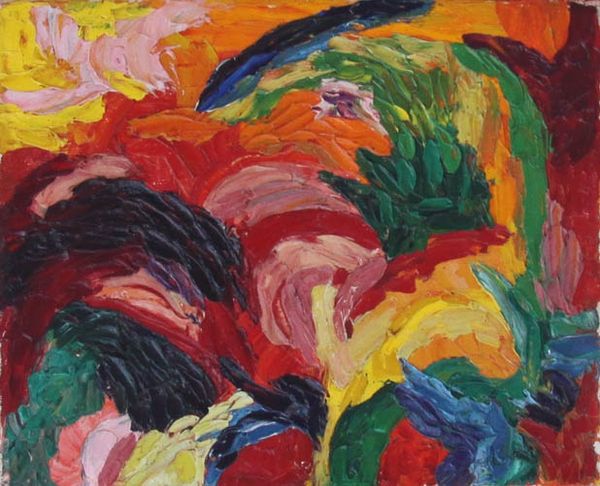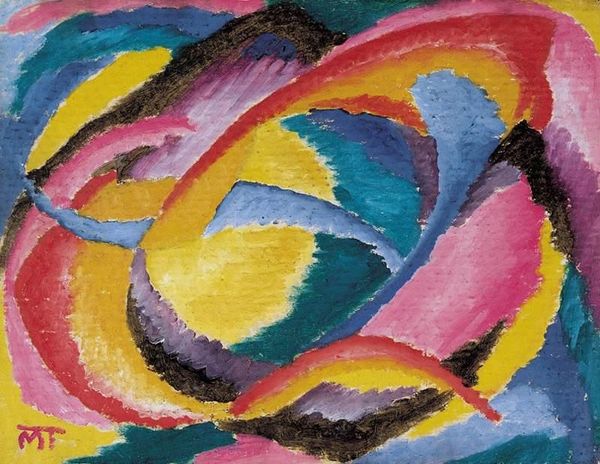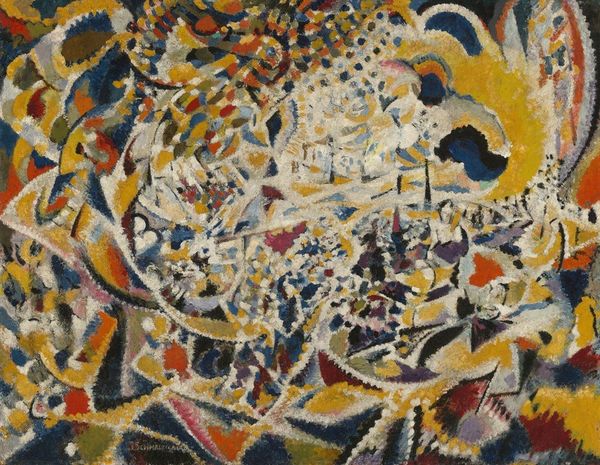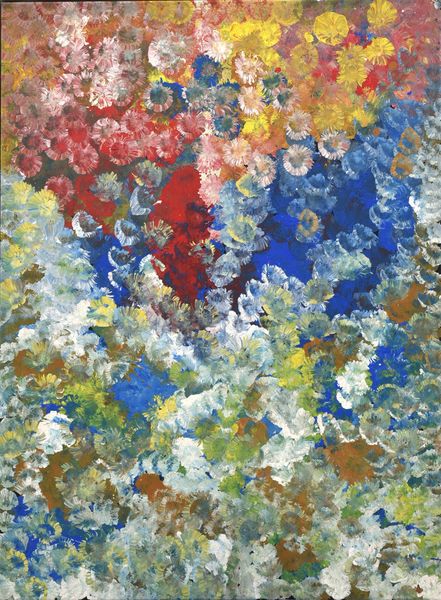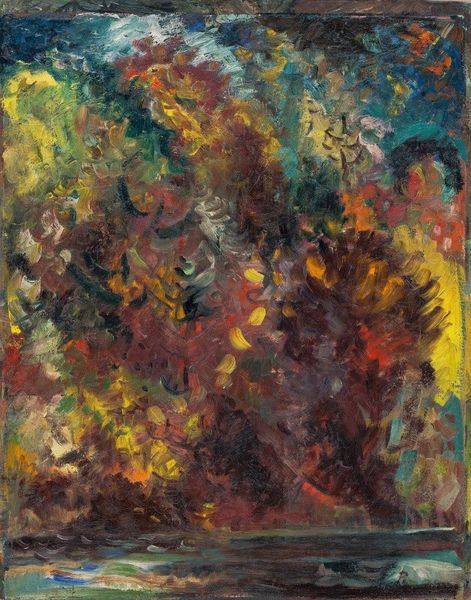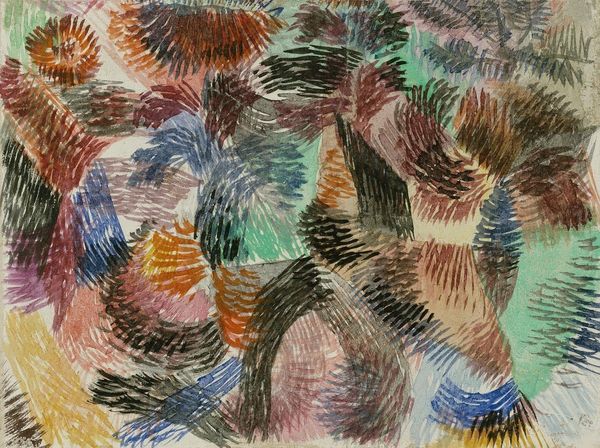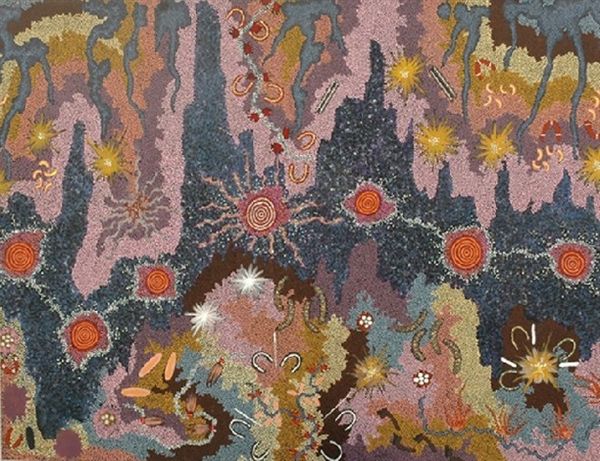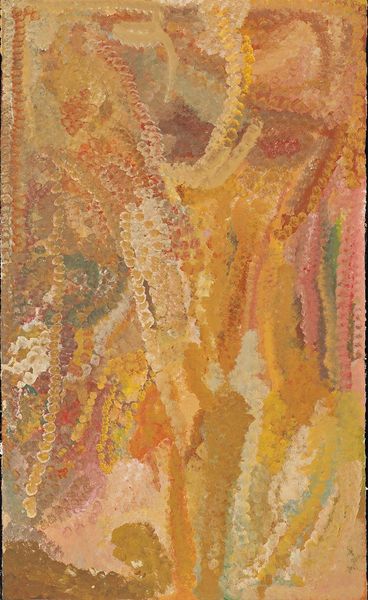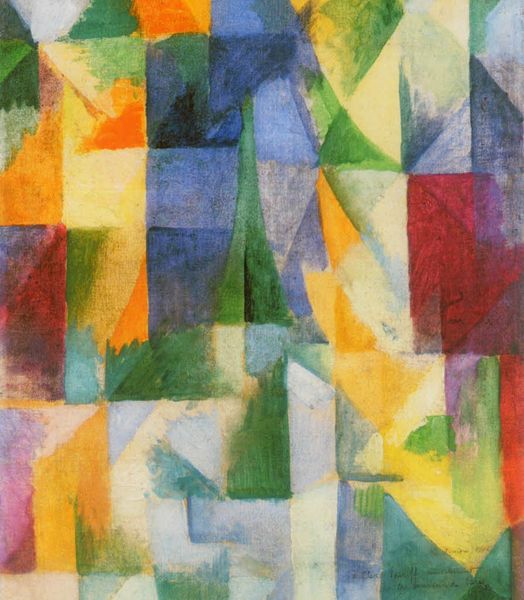
painting
#
naturalistic pattern
#
abstract painting
#
painting
#
landscape
#
acrylic on canvas
#
abstraction
#
modernism
Copyright: Emily Kame Kngwarreye,Fair Use
Curator: I am immediately struck by the rhythm within Emily Kame Kngwarreye's "My Country IV" from 1995. It feels both chaotic and harmonious. What stands out to you? Editor: The work appears to be dominated by the recurring application of circular forms; that stippled effect seems key to unlocking its meaning. I’m curious, though, about what constitutes "country" in this instance, especially as embodied through the acrylic medium on canvas. Curator: The country here is Kngwarreye's ancestral homeland. The dot-like application, almost a field of tiny brushstrokes, speaks to the constant regeneration of the land itself after rainfall, a significant event in the desert. Those layered dots echo the profusion of life after a downpour—evoking memory, abundance and promise. Editor: The formal composition almost belies that generative concept. I read these stacked marks more like geological striations or layered sediments, almost mirroring a cartographical cross-section— perhaps less about life abounding and more about the very architecture of the land itself. Curator: The architecture, yes, but the architecture *animated* by memory! For the Anmatyerre people, the land isn't simply a space; it's alive with stories and imbued with the presence of ancestors. Kngwarreye isn’t merely depicting; she's summoning. The seemingly abstract patterns are potent cultural glyphs that channel dreaming tracks and kinship systems. Editor: The work certainly dances between what is perceived, expressed, and embodied. In semiotic terms, the swirling forms resist being tied to one specific signifier. Perhaps their power resides exactly in their openness to multiple interpretations, moving past a purely Western formalism. The materiality resists clear legibility. Curator: Indeed. It is both map and mantra, echo and expression, merging individual agency and cultural heritage within these acrylic traces. Seeing it with you makes the layered meanings resonate anew. Editor: Yes, encountering it collectively definitely brings new angles to my reading of it. It challenges purely structural ways of thinking about both art and country.
Comments
No comments
Be the first to comment and join the conversation on the ultimate creative platform.
